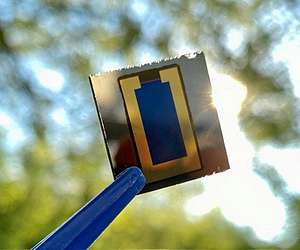A leading laboratory in photonics and renewable energy at the University of Ottawa has developed a new method for measuring the solar energy produced by bifacial solar panels, the double-sided solar technology which is expected to meet increased global energy demands moving forward.
Published in the journal Joule, this study from the SUNLAB team in the Faculties of Engineering and Science proposes a characterization method that will improve the measurement of bifacial panels indoors by considering external effects of ground cover such as snow, grass and soil. This will provide a way to consistently test bifacial solar panel performance indoors that accurately represents how the panels will perform outdoors.
With bifacial photovoltaics expected to provide over 16% of global energy demand by 2050, the SUNLAB’s methodology will improve international device measurement standards which currently do not distinguish between ground cover.
“Our proposed characterization method, the scaled rear irradiance method, is an improved method for indoor-measuring and modelling of bifacial devices that is representative of outdoor environmental conditions,” explains Erin Tonita, lead author and a Physics PhD student studying under Professor Karin Hinzer, whose research group develops new ways to harness the sun’s energy.
“Incorporating this new method into future bifacial standards would provide a consistent methodology for testing bifacial panel performance under ground conditions including snow, grass, and soil, corresponding to globally varying illumination conditions.”
Photovoltaics is the study of converting solar energy into electricity through semiconducting materials, such as silicon. In bifacial solar panels, the semiconducting material is wedged between two sheets of glass to allow for sunlight collection on both sides, with one side typically angled towards the sun and the other side angled towards the ground.
The additional light collected by bifacial solar panels on the rear-side offers an advantage over traditional solar panels, with manufacturers touting up to a 30% increase in production compared to traditional solar panels. Bifacial solar panels are also more durable than traditional panels and can produce power for over 30 years.
“Implementation of this method into international standards for such panels can enable predictions of outdoor bifacial panel performance to within 2% absolute”, says Tonita, who expects the benefits of this methodology to include:
+ Allowing comparisons between existing and emerging bifacial technologies.
+ Enhancing performance via ground cover specific design optimization.
+ Increasing solar panel deployments in non-traditional markets.
+ Reducing investment risk in bifacial panel deployments.
+ Improving bifacial panel manufacture datasheets.
“This method is of particular importance as renewable energy penetration increases towards a net-zero world, with bifacial photovoltaics projected to contribute over 16% of the global energy supply by 2050, or around 30,000 TWh annually,” says Hinzer, founder of SUNLAB and the University Research Chair in Photonic Devices for Energy and a Professor at the School of Electrical Engineering and Computer Science.
“This will extend current International Electrochemical Commission standards for bifacial solar panel measurements, enabling accurate comparisons of bifacial panel technologies, application-specific optimization, and the standardization of bifacial panel power ratings,” adds Hinzer, whose SUNLAB researchers worked in collaboration with Arizona State University for the study.
Research Report:A general illumination method to predict bifacial photovoltaic system performance
Related Links
SUNLAB
All About Solar Energy at SolarDaily.com
|
We need your help. The SpaceDaily news network continues to grow but revenues have never been harder to maintain. With the rise of Ad Blockers, and Facebook – our traditional revenue sources via quality network advertising continues to decline. And unlike so many other news sites, we don’t have a paywall – with those annoying usernames and passwords. Our news coverage takes time and effort to publish 365 days a year. If you find our news sites informative and useful then please consider becoming a regular supporter or for now make a one off contribution. |
||
|
SpaceDaily Contributor $5 Billed Once credit card or paypal |
SpaceDaily Monthly Supporter $5 Billed Monthly paypal only |
|

![]()
Improving perovskite solar cell resistance to degradation
Lausanne, Switzerland (SPX) Jan 13, 2023
Perovskite solar cells (PSCs) can be made with low-cost materials, are highly efficient, can surpass traditional silicon solar cells, and have the potential to revolutionize renewable energy. However, one of the current drawbacks preventing their widespread use has is their lack of operational stability.
Now, scientists at EPFL and Sungkyunkwan University in Korea have found a way to improve the stability of PSCs. The researchers focused on the degradation of perovskite thin films, which can be da … read more
